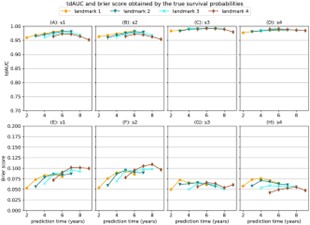
by Usha Govindarajulu | Aug 28, 2025 | Biostatistics, Blog, Usha Govindarajulu
August 27, 2025 The authors are motivated by small sample laboratory or animal studies with non-Gaussian biomarker values and came up with a bootstrap box-cox likelihood ratio confidence interval for the median. Normally due to non-normality of data, one might...

by Usha Govindarajulu | Aug 13, 2025 | Biostatistics, Blog, Usha Govindarajulu
August 13, 2025 The authors looked at a method called survival average causal effect (SACE) for dealing with situations when continuous outcome measurements are truncated by death and cause problems for estimating unbiased treatment effects in randomized controlled...

by Usha Govindarajulu | Jul 30, 2025 | Biostatistics, Blog, Usha Govindarajulu
July 30, 2025 The authors present a new method for predictive performance assessment that works for non-parametric and semi-parametric models and can check with addition of a frailty term and also for smoothing. The predictive log-likelihood idea does not work well...

by Usha Govindarajulu | Jul 16, 2025 | Biostatistics, Blog, Usha Govindarajulu
July 16, 2025 The authors discuss how to correctly interpret causal hazard contrasts and how the analyses of hazards should routinely be translated onto probabilities. As they mentioned in their discussion, hazards are the backbone of analyses of time-to-event data...

by Usha Govindarajulu | Jul 2, 2025 | Biostatistics, Blog, Usha Govindarajulu
July 2, 2025 The importance of evaluating a longitudinal biomarker in survival analysis for overall or disease-free survival can be important. The authors have defined a new joint model for a longitudinal biomarker and a time-to-event endpoint, taking into account...

by Usha Govindarajulu | Jun 17, 2025 | Biostatistics, Blog, Machine Learning, Usha Govindarajulu
June 18, 2025 The goal of this paper was to bridge gaps in understanding how to use machine learning (ML) methods for survival by presenting a comprehensive study comparing various ML methods for dynamic survival analysis. They sought to provide researchers and...






